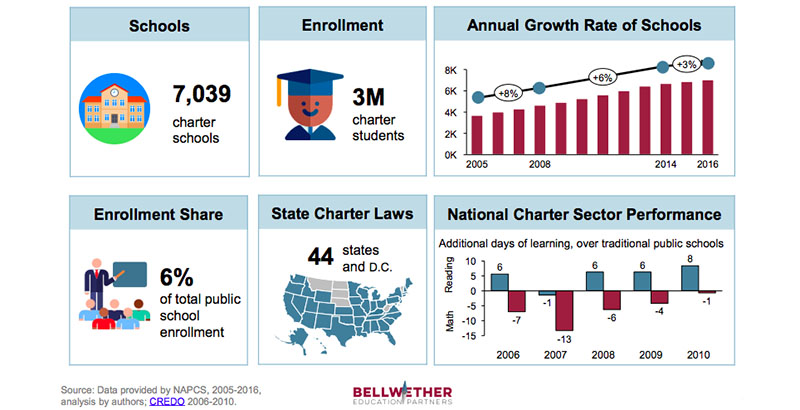Analysis: New Analysis Shows How a $13 Billion Funding Gap Between Charter Schools & Traditional Public Schools Hurts Underserved Students

Twenty-seven years into the national charter school experiment, funding of charter schools and traditional public schools remains wildly unequal. In fact, charter school students receive 27 percent less in per-pupil funding than their traditional public school counterparts, leaving a total funding gap of nearly $13 billion.
The sheer magnitude of this gap should alarm anyone who cares about equity, but it matters even more because most charters serve a higher proportion of students of color and low-income students than traditional public schools and show positive effects on the performance of these groups. When charters are underfunded, it is the students most in need of a quality education whose educational opportunities are limited.
In a new publication I co-authored, The State of the Charter Sector, we dug into demographics and enrollment data and found that charter schools are blacker, browner and poorer than traditional public schools. Despite serving only 6 percent of students nationally, charter schools disproportionately serve more black, Latino and low-income students than traditional public schools. The most recent data show that charters serve 12 percent more black students, 6 percent more Hispanic students and 3 percent more low-income students than traditional public schools.
Not only do charter schools serve higher percentages of historically underserved student groups, they also have positive effects on their academic performance. Data analysis shows that black and Latino students who attend urban charter schools experience up to 36 more days of learning than their traditional public school peers.
So when charter schools are producing positive results, especially for students of color, it’s troubling that they face significant funding challenges. Across cities with large charter sectors, charter schools receive an average of $6,000 less per student than traditional public schools.
When we put the full picture together, it becomes clear that charter schools and the students they serve are doing more with less. How much more success might charter school students experience if their schools were equally funded? Might more students of color graduate from college? Might more low-income students help end the cycle of poverty for their families?
To adequately address these gaps, policymakers should take steps to make funding fair. Gaps stem from a variety of sources, including state per-pupil operational funds, categorical grants intended for specific educational programs and local revenue. Policymakers should first identify the policies and practices that drive funding gaps in their locale and then develop solutions specific to their city or state. Colorado and Utah, for example, allocate equivalent operational funding to charter and district schools, and charter schools can access the same categorical funds as district schools.
A common critique of charter schools is that they drain resources from public schools, but these data tell a different story. The truth is that at every level of government — federal, state and local — charter schools receive less funding that traditional public schools. As a result, they make strategic concessions to extend the reach of their limited budgets, including operating in lower-quality facilities such as smaller spaces without a gym or a full kitchen, or offering fewer student supports. For far too many students, and for students of color especially, charter schools are their only chance to get a great education. That chance is put at risk when charter schools have to shutter their doors or limit their seats because of inadequate funding.
Brandon Lewis is an analyst at Bellwether Education Partners. Previously, he was an education policy manager with the National Urban League, where he worked to shape the league’s educational equity agenda and analysis of the Every Student Succeeds Act.
Disclosure: Bellwether Education Partners was co-founded by Andrew Rotherham, who sits on The 74’s board of directors.
Get stories like these delivered straight to your inbox. Sign up for The 74 Newsletter

;)